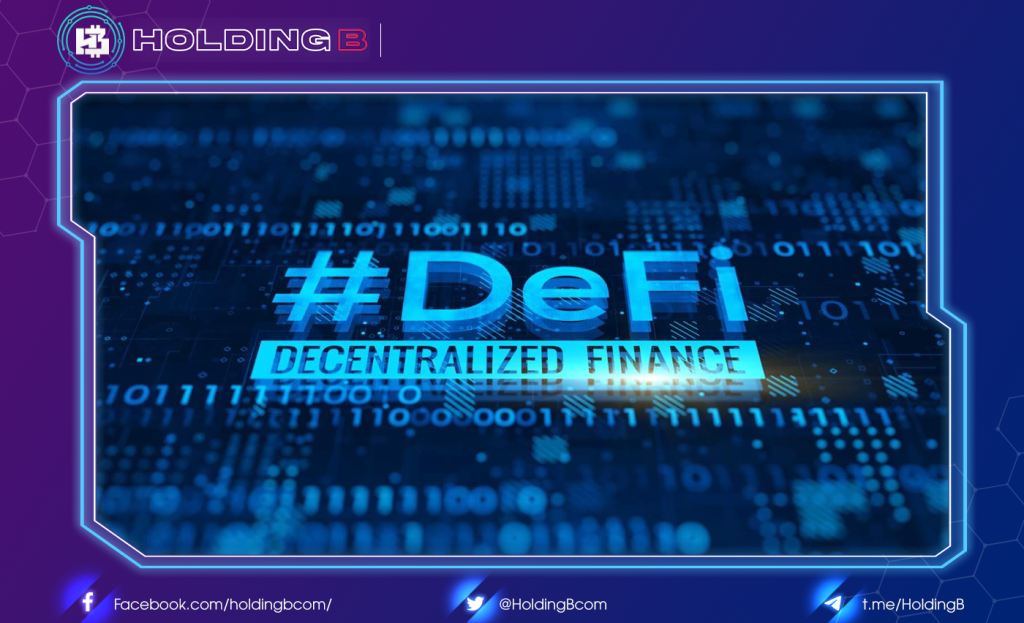
Decentralized finance, or DeFi, provides a clear description of an emerging ecosystem of blockchain-based alternative financial systems. The DeFi platform helps users participate in various traditional financial transactions such as lending and borrowing through direct P2P exchanges. As a result, they can eliminate the need for traditional financial intermediaries and offer a direct mediation solution for the transfer of value.
However, the growing popularity of DeFi also draws attention to DeFi security risks for obvious reasons.
Understanding the DeFi Ecosystem’s Vulnerability
DeFi, or decentralized finance, provides decentralized access to financial services. DeFi leverages open protocols and decentralized applications empowered by smart contracts. You can better understand DeFi risks by identifying the core elements of their function.
Smart contracts are indeed an important aspect of DeFi as they replace the role of conventional centralized financial institutions. However, smart contracts are just code, and any compromise in the code could result in a loss of funds. On the other hand, hackers are always looking for an opportunity to compromise the DeFi ecosystem through any dApp or user in the ecosystem.
What are the Security Risks in DeFi?
DeFi has gone through many stages of profound influence. Specifically, August 2021 is nearly $75 billion in locked value of DeFi protocols. As such, it is in the various DeFi protocols that it is important to identify decentralized financial security risks. Identifying security risks in the DeFi domain can help predict effective safeguards for large investments in DeFi protocols. Here are some notable items among the DeFi security risks that you should beware of.
Wrong Liquidity Pool Estimates
- The most common problem that leads to a security risk in DeFi is the miscalculation of the value of the tokens in the liquidity pool. DeFi users invest their tokens in a liquidity pool and receive stakes that help them gain value in the future. Generally, liquidity pools evaluate the value of tokens in the pool according to the pool’s existing composition rather than depending on external miracles.
- Attackers can take advantage of this difference in one of the more common DeFi attacks, such as quick loan attacks. Attackers can create a radical imbalance in the pool for the duration of a particular transaction. An unbalanced pool can lead to incorrect token value calculations while also allowing attackers to compromise the value of the pool.
Compromised Private Keys
- Another serious problem that has emerged among the security risks in DeFi is that private keys are stolen or leaked. Blockchain protocols leverage cryptocurrencies to manage access and control blockchain accounts. The private key is basically the PIN you need to access transactions sent to your public key address. As a result, many prominent DeFi risks emerge from the possibility of private keys being compromised. Interestingly, there are different ways to leak or steal private keys.
- The first of several types of attacks on private keys, including the compromised MetaMask interface. MetaMask is a popular application specifically designed to interact with the Ethereum blockchain and perform transactions on it. Various DeFi projects, as well as users, have experienced cryptocurrency losses due to the use of malicious versions of MetaMask.
- DeFi security risks from stolen and leaked private keys also arise from poor key generation practices. It is important to use a secure random number generator to generate the private key. However, key generation using a poor source of randomness can make the private key vulnerable to hackers. How? A poor private key is easy to guess, and hackers can easily gain control of a user’s blockchain account.
- Another potential way you could lose your private keys to regular DeFi attacks refers to the loss or theft of the seed phrase. Seed phrases or mnemonic phrases provide an easier way to remember private keys. However, many notable DeFi hacks in recent times have involved the accidental exposure or theft of a seed phrase.
Frontrunning Attacks
- The next major addition to DeFi security risks will be pre-run attacks. You should note that blockchains do not add instant transactions to the distributed ledger. On the other hand, transactions must be broadcast across the entire blockchain network upon creation. The transactions are then stored in the mempools of each blockchain node before they are added to the ledger in blocks.
- The time between creating a transaction and putting it on the ledger is a shining opportunity for pre-run attacks. Attackers often look for transactions they can compromise by taking advantage of miners’ extractable value. If an opportunity for attacks is identified first, the attackers will create their own variant of the transaction with a higher transaction fee before transmitting it to the network. Blockchain miners usually sort transactions in order of their transaction fees. So, with the attacker’s transaction coming before the original transaction, they can easily make a profit. Security risks ahead in DeFi can have varying degrees of impact.
- First of all, many attackers or bots will take advantage of avant-garde activity to profit from their prior knowledge of the user’s transactions. However, in some cases, attackers will perform a mining attempt, then return the compromised tokens to the exploited protocol.
Rug Pulls and Ponzi Schemes
- Another top entry among decentralized financial security risks would obviously refer to carpet pulling and Ponzi schemes. Various DeFi protocol attacks emerge from external threats, though not in all cases. Alarmingly, DeFi users can also be victims of attacks by the protocol’s owners and developers.
- Pulling the rug is one of the most common examples of insider attacks in DeFi. This is one of the common DeFi attacks where an individual within the company with access to the company’s contracts misuses their privileges to extract value from the protocol. In any case, the project and team disappeared into oblivion, leaving little to no problem solving.
Inefficient Access Control
- The majority of DeFi smart contracts leverage the use of privileged functions, which is also the cause of one of the common DeFi security risks. Privileged functions are specially adapted so that owners of smart contracts can call functions. In addition, the contract owner also has access controls to execute functions. The most common approach to managing access is through the specification of calls to a function that will be executed by one or more addresses from a set of addresses.
- It is alarming that access controls are implemented incorrectly or incompletely, thus opening the door for attackers. Hackers can gain privileged access to a smart contract and can mine for value using the smart contract to their advantage.
51% Attacks
- The last of the different types of decentralized financial security risks would clearly point towards 51% attacks. It should be noted that the 51% attack is one of the most common threats in blockchain security. 51% attacks are more common in the case of Proof-of-Work protocols and arise mainly due to the design of blockchain consensus algorithms. It is clear that blockchain consensus algorithms take advantage of some kind of majority vote, and in Proof-of-Work, miners use their computing power to vote.
- In the case of a 51% attack, the attackers gain control over a large portion of the computing power of a blockchain. Thus, they can easily guarantee the faster development of the blockchain than the legal blockchains. The attackers can then exploit security risks in DeFi through a 51% attack and rewrite the contents of the distributed ledger. Most importantly, 51% attacks can also open up the possibility of double-spend attacks. Therefore, 51% attacks can easily threaten the security of DeFi protocols running on smart contracts.
DeFi Security Best Practices
While there are a lot of notable DeFi risks, you can work towards some best practices to stay safe from them. One of the popular recommendations in DeFi security best practices is to mention smart contract testing. Additionally, the use of DeFi-related rating and monitoring tools can help review confidential information regarding DeFi protocols. Furthermore, network health monitoring and risk management solutions can also serve as important activities in addressing DeFi security risks.
See ya in the next article !
Don’t forget to follow useful articles about Crypto Market from team Holding B !!!
- Telegram Channel: https://t.me/HoldingBcom
- Telegram Group: https://t.me/HoldingB
- Website: https://holdingb.com/
- Twitter: https://twitter.com/HoldingBcom
- Facebook: https://www.facebook.com/holdingbcom





